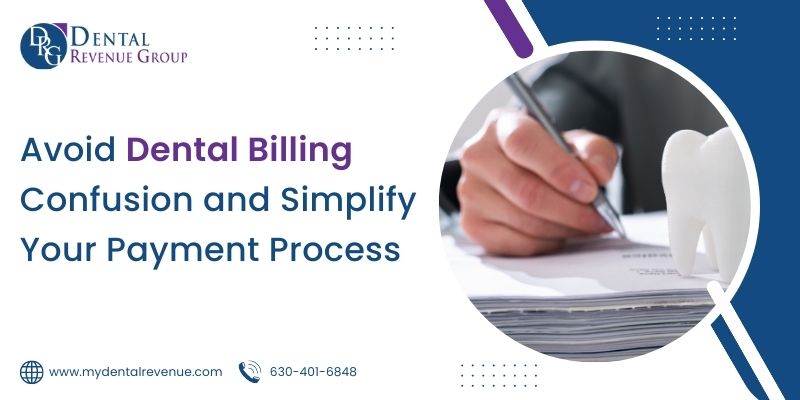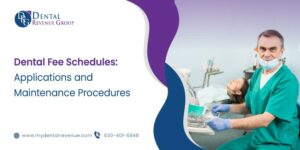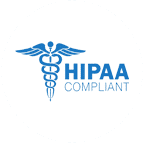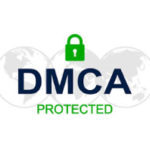Dental billing presents unique challenges due to its complex nature, including varying medical procedures, treatment intensity, and pre/post-procedure time involvement. It involves a separate set of codes known as “Current Dental Terminology (CDT),” making the billing process more intricate. Additionally, healthcare policies often do not cover dental procedures, requiring skilled and experienced billers and coders who are well-versed in the specific rules and regulations of dental billing. If you’re confused about your dental bill and whether it’s right, this guide is for you. We’ll explain your rights and how to avoid being a victim of dental billing confusion.
Key Challenges of Dental Billing
Here are the following challenges that providers face during billing procedures:
Regular Updates and Changes in CDT Codes
Keeping up with the frequent updates in CDT codes is essential. To avoid claim denials, dental billers and coders must stay informed about the modifications, new codes, and deleted codes.
Insurance Coverage Limitation
Verifying patients’ insurance coverage is crucial as not all policies include dental procedures. Billers must cross-check and validate the coverage details beforehand to determine the appropriate payment methods for non-covered services.
Shortage of Dental Billers and Coders
Maintaining an experienced billing team is vital to ensure the accurate processing of claims. High turnover rates, absenteeism, and constant staff changes can negatively impact billing quality, leading to increased denials and potential revenue loss.
Denials and Rejections
Dental claims are particularly susceptible to denials and payment rejections due to their speciality-based nature and specific coding requirements. Implementing an effective dental billing strategy can help mitigate denials and rejections, ensuring smoother reimbursement processes.
Collection Issues
Dental insurance policies can vary regarding factors like copays, deductibles, co-insurance, and reimbursement percentages. The billing company must comprehensively understand these nuances to handle dental claims efficiently and maximize payment collection.
Time Constraints
Processing dental claims requires careful attention to meet the timely filing limit (TFL) set by insurance providers. However, due to the inherent challenges, claim submissions are often delayed, impacting cash flow. Managing these time constraints is essential to ensure timely reimbursement and financial stability.
Tips To Avoid Dental Billing Confusion
Dental practices face the challenge of adapting and improving patient health record-keeping and tracking processes with ongoing advancements in electronic systems. Dental specialists encounter challenges due to limited time, particularly in managing their billing and coding processes. Timely submission of claims is crucial for practices to receive payment for services rendered. Disrupted cash flow resulting from delayed or improper billing affects a dental practice’s ability to invest in new technology and make necessary improvements to enhance patient satisfaction.
Learn Dental Insurance Verification Benefits
Constraints on Procedure Frequency
Patients may have limitations on the number of times they can receive routine dental cleanings, exams, and X-rays.
Coverage Limitations
Insurance may not cover all dental services recommended by the dentist. Higher-cost procedures like root canals and crowns may receive lower repayment rates.
Time Limits and Waiting Periods
There may be time limits, waiting periods, or “missing tooth clauses” for prosthetic replacements such as dentures.
Limited Coverage for Specific Services
Certain services like orthodontics and fluoride treatments may only be reimbursed for children under 19.
Alternative Treatment Coverage
When a dental procedure is recommended, the insurance plan may only cover a lower-cost alternative that provides an acceptable outcome. For example, a silver filling instead of a more expensive white composite filling.
Exclusion of Cosmetic Services
Dental insurance often does not cover services performed solely for cosmetic purposes.
Annual Maximum and Deductible
An annual coverage limit and a deductible are common in dental plans. Once a patient reaches their yearly maximum, the plan will not cover any additional services until the next plan year begins.
Staying Informed About Coding Changes
Coding changes in medical equipment and procedures occur regularly, necessitating ongoing awareness and adaptation. Dental practices must stay informed about these changes to code and bill for their services effectively. These changes enable the industry to respond to evolving needs and advancements. They also facilitate the implementation of new procedures and technologies, such as tele-dentistry, by providing appropriate codes. Additionally, updates in materials and payment submission methods contribute to improving efficiency and reimbursement processes.
Stay Updated on Insurance Coverage
In dental billing, it is crucial to prioritize the quality of dental claims and streamline the collection process. One effective way to achieve this is by regularly checking insurance coverage for updates and recent changes. By staying informed about insurance policy coverage and benefit information, dental practices can better plan payment collections from patients and insurance providers. Understanding the specifics of insurance coverage allows dental billing professionals to accurately determine the patient’s financial responsibility and submit claims with the correct information. This knowledge helps in avoiding confusion and potential delays in claim processing.
Accounts Receivable (A/R) Follow-up
Effective Accounts Receivable (A/R) follow-up is crucial to maintain a healthy cash flow in dental practices. A timely follow-up process is necessary when claims remain unpaid by insurance companies after 30 days. Here are the steps to take:
- Investigate claim denials to determine the reason behind them.
- Identify any missing information on the claims that may be causing delays.
- Ensure the correct codes are assigned to the claims for accurate billing.
- Resubmit the claims with the necessary updates or corrections.
Dental billing companies employ A/R follow-up tactics to reduce instances of overdue payments and rejected claims. This involves initial policy evaluation, analyzing and prioritizing unpaid carriers, and following up with patients for payments.
Know Your Rights
If you’re unhappy with the services or treatment your dentist provides, it’s important to know your options and how they work.
- Know the dentist’s rights. The same goes for dentists: they should be able to explain their billing policies clearly in writing as part of an informed consent agreement. If they don’t do this, consider finding another dentist who will give you clear explanations and answer any questions that arise during treatment—and make sure that information is included in any paperwork related to insurance claims or legal matters involving the office itself (such as malpractice suits).
- Know patient rights when it comes time for payment issues with insurance companies after receiving treatment at a dental office where bills are confusingly high, but no one explains why until long after treatment has already been completed!
Use Your Dental Plan’s Deductible First
For insurance benefits to begin, the individual must pay a certain amount known as the deductible. It’s usually set at a fixed dollar value and higher than the copay or co-insurance, two of the most common costs of seeing a dentist. If you don’t have dental insurance, it may be worth paying for any procedures that require appointments in advance (like cleanings). You’ll save money by not having to get an appointment every time something goes wrong!
Understand What You Owe
Understanding what you owe is the first step in avoiding dental billing confusion.
- Understand what you are paying for: The dentist will list services and charges, including office visit fees, X-rays and lab fees. You should also be aware of any other costs that may come up during your treatment (such as an antibiotic prescription).
- Understand what you are not paying for: If there was an infection during your visit or if additional treatment was recommended by another doctor who saw you at their facility but wasn’t covered by insurance coverage (for example, if they removed some teeth). These additional charges need to be added to their bill so that they can be paid separately from other expenses like office visit fees or X-rays.
Outsourcing Dental Billing Services
Outsourcing dental billing services can streamline the billing process for dental offices, leading to increased cash flow and reduced overhead expenses. It provides a comprehensive solution for all your billing challenges. By outsourcing, you can minimize dental billing errors by carefully verifying patient information, including their name, address, date of birth, insurance details, and policy number, and avoiding duplicate claim submissions. Billing errors can have a negative impact on your revenue cycle, which is why it is crucial to have skilled dental billing experts who can ensure timely reimbursement by accurately submitting insurance claims. Establishing a streamlined process for reviewing and validating claims is essential to eliminate inaccuracies and optimize the quality of monthly collections.
Conclusion
It’s important to remember that dental billing is confusing, but it doesn’t have to be. With some knowledge and preparation, you can avoid expensive pitfalls by taking care of your insurance claims.
About Us
Dental Revenue Group (DRG) has accumulated extensive knowledge and experience in the US Healthcare and dental billing industry, spanning over 20+ years. Our expertise extends to various specialities and a vast clientele of dentists, Dental Clinics, and groups, solidifying our reputation as a leading offshore partner. With 120+ clients and proficiency in over 35+ specialities, DRG is renowned for providing top-notch services. To learn more about DRG, you can reach us at 630-401-6848 or visit our website at https://mydentalrevenue.com/











